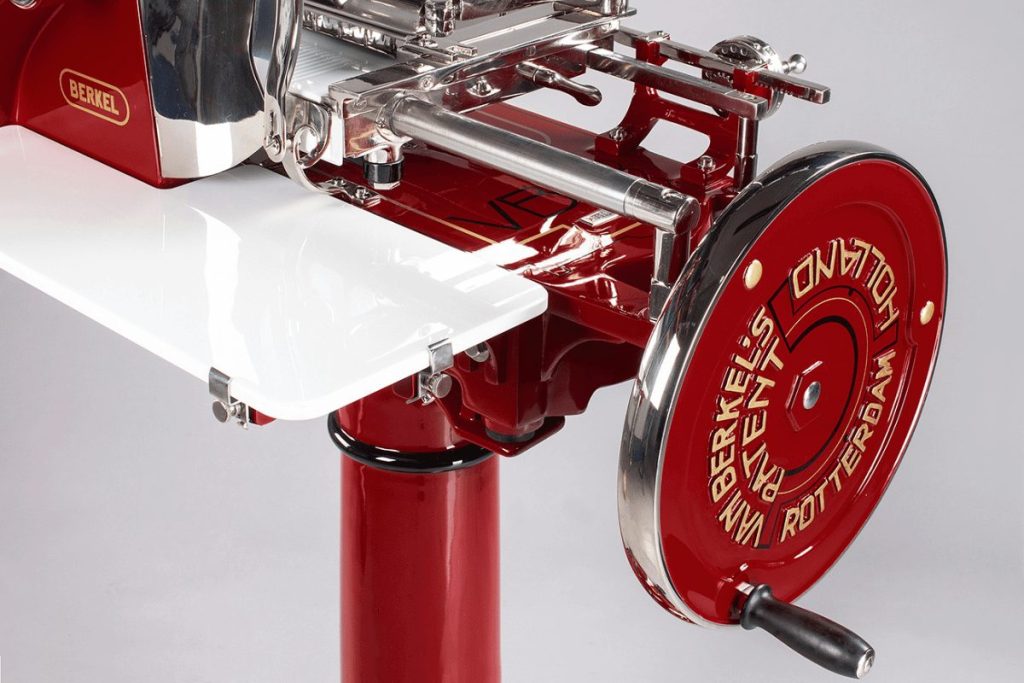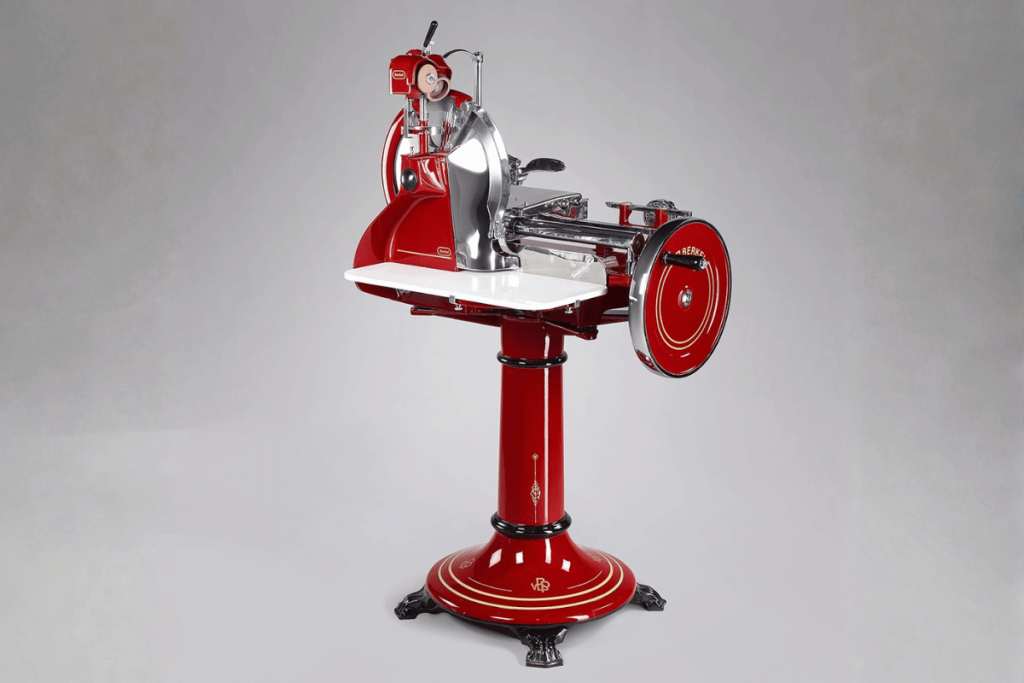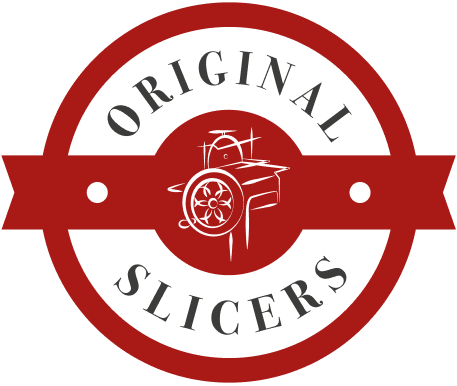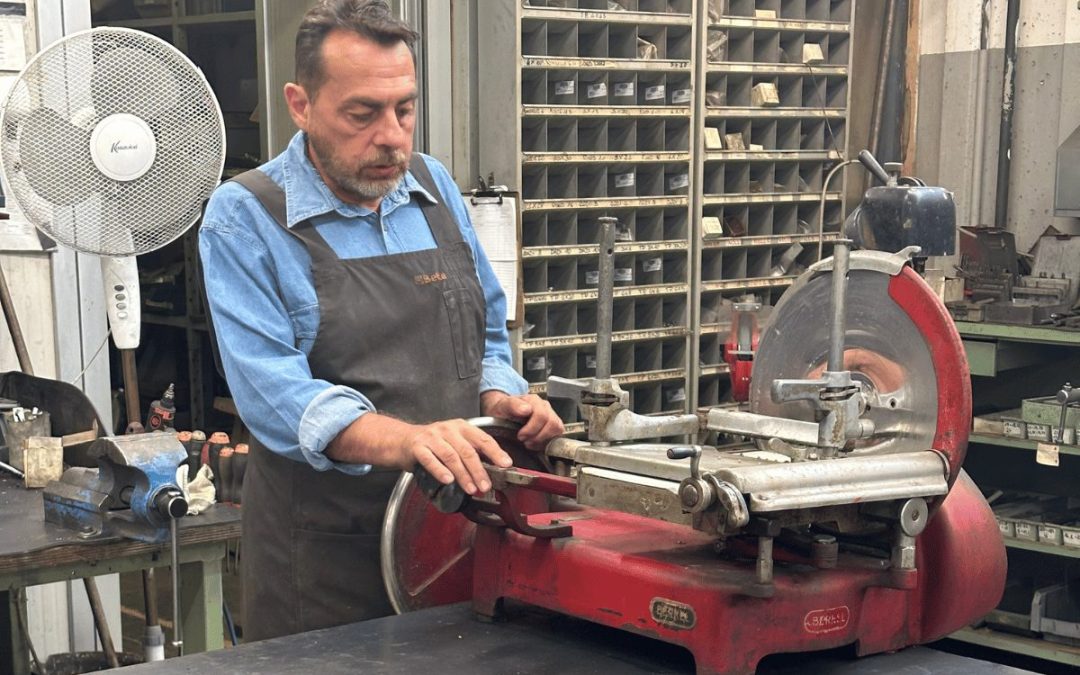The restoration of vintage Berkel slicers represents a double challenge for Original Slicers: on the one hand, the need to respect strict environmental and technical parameters that influence the choice of every material and technology used; on the other, the desire to create a draining surface capable of transmitting emotion, living the poetry of the place and blending into the landscape without dominating it.
Artisanal Berkel slicer restoration
Restoring vintage Berkel slicers requires deep knowledge and artisanal skill that go far beyond mere aesthetic repair.
It is a true art form aimed at preserving and enhancing original techniques, respecting the history and integrity of each piece.
These machines, born at the beginning of the 20th century, have become timeless icons of design and symbols of elegance and functionality.
Each Berkel slicer restoration carried out by Original Slicers represents a perfect combination of tradition, precision, and respect for original craftsmanship.
Why Berkel slicers became timeless icons
It all began in 1898 in Rotterdam, when Wilhelmus van Berkel patented an innovative machine that revolutionised the way cold cuts were sliced.
By 1899, the first production had begun, and within a few years, the invention conquered the world. In 1905, a factory opened in Paris, followed by new locations in Belgium, Switzerland and even the United States.
What made the Berkel slicer vintage models unique was the combination of a perfectly sharpened concave blade and a manual flywheel that allowed the carriage to slide smoothly and precisely.
This technology guaranteed thin, even slices without heating the product, preserving its aroma and texture, turning the Berkel into a true symbol of artisanal excellence and mechanical precision.
But it wasn’t just functionality that made Berkel slicers legendary. Their elegant lines, finely decorated flywheels and brilliant enamel finish transformed them into timeless design objects, still admired today by collectors and chefs alike.
The restoration process
The restoration of vintage Berkel slicers is a meticulous process combining technical expertise, artisanal experience and respect for the original design.
Each machine is completely disassembled, and every single component is carefully inspected.
Damaged or worn-out parts are replaced with original Berkel spare parts to ensure authenticity and functionality.
This is followed by an accurate cleaning phase, in which every part is washed using dedicated machinery to remove all residues.
After cleaning, the components undergo sandblasting to eliminate old paint, oxidation and impurities, preparing them for the next stages of work.
Subsequently, each piece is hand-filled and sanded to obtain perfect surfaces. Then comes the painting process: primers and paints are applied in several layers, a total of eleven treatments between primers, matt coatings and decorations executed by hand or with an airbrush.
The final decoration and polishing stages restore the original brilliance, followed by the reassembly phase, where mechanical parts and repainted details are put back together, replacing elements such as the blade, sharpener, guard and grooved plate.
Step by step, the restored vintage Berkel slicer regains its original elegance and full functionality.
Antonio Barra, head of vintage Berkel slicer restoration at Original Slicers, says:
“Every Berkel I restore is an emotion, it feels like bringing a piece of history back to life.
Each vintage Berkel slicer consists of hundreds of individual parts if you count every single screw.
Over time, my team and I have learnt to know them all, to clean each one, reassemble them piece by piece, and bring them back to their original functionality.
For me, there is no work more rewarding than this, something I do every day with love and dedication.”
The most appreciated vintage Berkel models


Among the vintage Berkel slicers that made history, some have become true icons.
Model 7, produced between the 1920s and 1930s, is highly sought after for its elegant and compact lines: a rare machine, perfect for both collectors and restaurateurs who desire a unique piece for their premises.
Another great classic is Model 8, considered by many as the queen of vintage Berkel slicers.
Imposing and refined, it can transform any environment into a stage of style and tradition.
Each restoration by Original Slicers gives these models their original charm back, preserving the historic details that made them famous.
The charm of vintage Berkel slicers
Restoring a vintage Berkel slicer means embarking on a journey through time, rediscovering authentic materials, original details and traditional artisanal techniques.
For vintage enthusiasts, a restored Berkel is not simply a display item but a tangible testimony of culture and passion.
The presence of these slicers in domestic or commercial environments adds a distinctive, authentic touch that arouses admiration and curiosity.
In conclusion, the restoration of vintage Berkel slicers and other historic objects is a conscious choice of quality, bringing new life to pieces of history that might otherwise disappear.
It is a choice combining aesthetics, functionality and respect for the environment, perfect for those who wish to stand out through the timeless charm of restored vintage craftsmanship.

